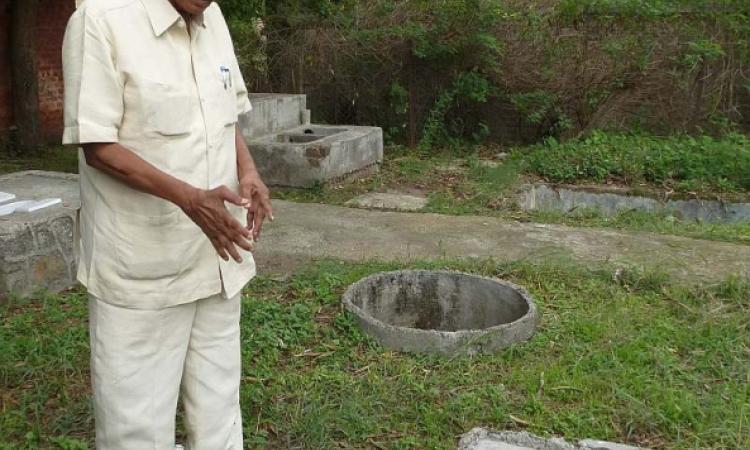
When Dr. Mapuskar landed in Dehu village to practice medicine, there were no toilets. With no other option at hand, Mapuskar joined the hundreds of others in the village and went out in the open. It didn’t take long for him to be convinced that the general ill heath of the populace is directly related to the poor state of sanitation and hygiene.
The British Medical Journal lauds sanitation as the most important medical advancement in the past 150 years. Acknowledging the importance of good personal hygiene and the direct and indirect benefits of keeping people away from exposed feces, Dr. Mapuskar initiated a latrine construction programme in the village on a small scale. However, these were obliterated during the monsoons.
Four years went by. Dr. Mapuskar tried out another approach this time around. By showing stool samples and samples of soil in the village, he brought to the notice of the community the huge menace of round worm infestation and showed how the parasite enters into the food cycle, leading to contagious infectious diseases.
He felt that the time was right to introduce Apparao Patwardhan‘s famous two pit latrines, known as ‘Sopa sandas’. At the same time, he also researched into the workings of septic tanks and anaerobic digestion, and slowly the Malaprabha technology was taking shape.
The Malaprabha system
Instead of confining the night soil to soak pits, Mapuskar devised a way to put it to good use. He was inspired by bio gas plants that employ the ‘Water jacket floating dome’ that digest human and animal waste. After some trial and error, Mapuskar perfected the Malaprabha design in 1980.
The Malaprabha system is a simple toilet linked bio-gas generating arrangement where gases released as a result of anaerobic digestion of human feces is used. The system has three chambers where the fecal matter is retained for different durations. The first chamber holds the fecal matter for around 30 days and produces the highest quantity of gas. The second and third chambers retain the refuse for 15 days in total, producing relatively lesser quantity of gas. The partially treated effluent which comes out after the treatment process is let into the drainage system.
On an average, it is possible to obtain 35 - 40 litres of biogas from the night soil generated by one person per day. If the system is put in place in a household of 5 or 6, it is possible to generate bio gas that can fulfill the fuel needs of one person per day, thereby serving as a low cost complement to LPG.
Holistic improvement
The dramatic reversal in the community’s health status was astounding. Diarrhea, cholera and typhoid, once common occurrence, became very rare. The number of worm infections in the community dropped to just 20% and there were no recorded cases of Hepatitis.
Even before the Government of India could launch the subsidy based Central Rural Sanitation Programme, few hundred biogas linked toilet facilities were put in place, thanks to Dr. Mapuskar’s resolve and the faith the community put in themselves and him.